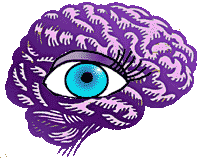Exchange Stabilization Fund
What I have been afraid to blog about: The ESF and Its History
http://www.youtube.com/watch?v=2ssrcD5GdPQ
http://www.youtube.com/watch?v=ImuVUab6WW0
http://www.youtube.com/watch?v=8Qsll_5-FXc
http://www.youtube.com/watch?v=iK-741ISz94
http://www.youtube.com/watch?v=lQf-u2nCVSw
Exchange Stabilization Fund
Introduction
The Exchange Stabilization Fund (ESF) consists of three types of assets: U.S. dollars, foreign currencies, and Special Drawing Rights (SDRs), which is an international reserve asset created by the International Monetary Fund. The financial statement of the ESF can be accessed at "Reports" or "Finances and Operations."
The ESF can be used to purchase or sell foreign currencies, to hold U.S. foreign exchange and Special Drawing Rights (SDR) assets, and to provide financing to foreign governments. All operations of the ESF require the explicit authorization of the Secretary of the Treasury ("the Secretary").
The Secretary is responsible for the formulation and implementation of U.S. international monetary and financial policy, including exchange market intervention policy. The ESF helps the Secretary to carry out these responsibilities. By law, the Secretary has considerable discretion in the use of ESF resources.
The legal basis of the ESF is the Gold Reserve Act of 1934. As amended in the late 1970s, the Act provides in part that "the Department of the Treasury has a stabilization fund …Consistent with the obligations of the Government in the International Monetary Fund (IMF) on orderly exchange arrangements and an orderly system of exchange rates, the Secretary …, with the approval of the President, may deal in gold, foreign exchange, and other instruments of credit and securities.
http://www.youtube.com/watch?v=2ssrcD5GdPQ
http://www.youtube.com/watch?v=ImuVUab6WW0
http://www.youtube.com/watch?v=8Qsll_5-FXc
http://www.youtube.com/watch?v=iK-741ISz94
http://www.youtube.com/watch?v=lQf-u2nCVSw
Exchange Stabilization Fund
Introduction
The Exchange Stabilization Fund (ESF) consists of three types of assets: U.S. dollars, foreign currencies, and Special Drawing Rights (SDRs), which is an international reserve asset created by the International Monetary Fund. The financial statement of the ESF can be accessed at "Reports" or "Finances and Operations."
The ESF can be used to purchase or sell foreign currencies, to hold U.S. foreign exchange and Special Drawing Rights (SDR) assets, and to provide financing to foreign governments. All operations of the ESF require the explicit authorization of the Secretary of the Treasury ("the Secretary").
The Secretary is responsible for the formulation and implementation of U.S. international monetary and financial policy, including exchange market intervention policy. The ESF helps the Secretary to carry out these responsibilities. By law, the Secretary has considerable discretion in the use of ESF resources.
The legal basis of the ESF is the Gold Reserve Act of 1934. As amended in the late 1970s, the Act provides in part that "the Department of the Treasury has a stabilization fund …Consistent with the obligations of the Government in the International Monetary Fund (IMF) on orderly exchange arrangements and an orderly system of exchange rates, the Secretary …, with the approval of the President, may deal in gold, foreign exchange, and other instruments of credit and securities.


![[Most Recent Charts from www.kitco.com]](http://www.kitconet.com/charts/metals/gold/t24_au_en_usoz_4.gif)
![[Most Recent Quotes from www.kitco.com]](http://www.kitconet.com/charts/metals/silver/t24_ag_en_usoz_2.gif)


0 Comments:
Post a Comment
<< Home